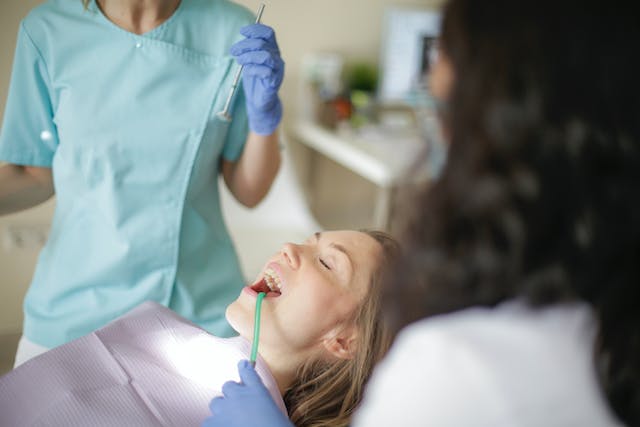Table of Contents
ToggleWisdom teeth removal is a common dental procedure that many individuals undergo at some point in their lives. While the anticipation of improved oral health and relief from pain may be exciting, the immediate post-surgery period can be challenging. The first 24 hours are crucial for a smooth recovery, and understanding what to expect and how to navigate this initial phase is essential. In this comprehensive guide, we’ll walk you through the key aspects of wisdom teeth recovery during the critical first day.
Understanding the First 24 Hours
1. Immediate Post-Surgery Care: What Happens in the Dental Chair
The moment you leave the dental chair after wisdom teeth removal near me, your body begins the healing process. The dentist or oral surgeon will provide you with specific post-operative instructions. Follow these guidelines diligently to ensure a successful recovery.
2. Managing Pain and Discomfort: Your Medication Protocol
Pain management is a significant aspect of the first 24 hours. Your dentist will likely prescribe pain medications to alleviate discomfort. Understand the prescribed dosage and timing, and have the medications readily available at home. Over-the-counter pain relievers like ibuprofen can also be used as directed.
3. Controlling Swelling: Ice Packs and Their Role
Swelling is a common side effect after wisdom teeth removal. Applying ice packs to the affected areas can help minimise swelling. Learn the proper way to use ice packs and the recommended duration for effective results.
The First Few Hours at Home
1. Immediate Post-Operative Instructions: A Recap
Revisit the post-operative instructions provided by your dentist. This may include guidelines on eating, drinking, and avoiding certain activities. Follow these instructions meticulously to promote optimal healing.
2. Choosing the Right Foods: Soft and Nutrient-Rich Options
In the first 24 hours, sticking to a soft food diet is crucial. Explore a variety of nutrient-rich and easy-to-consume options. Avoid hot or spicy foods and beverages to prevent irritation.
3. Hydration Matters: Drinking and Rinsing Safely
Staying hydrated is essential for recovery, but it’s important to drink liquids carefully. Use a straw cautiously or opt for sipping to avoid dislodging blood clots. Rinsing your mouth with a saltwater solution as recommended by your dentist aids in keeping the surgical sites clean.
Monitoring Your Recovery
1. Bleeding and Clot Formation: What’s Normal
It’s common to experience some bleeding in the first few hours after surgery. Gauze pads will be provided to control bleeding. Understand when and how to change them and be aware of signs that may indicate complications.
2. Recognising Signs of Infection: Red Flags to Watch For
While infections are rare, it’s crucial to be aware of signs such as increased swelling, persistent pain, or unusual discharge. If you notice any concerning symptoms, contact your dentist promptly.
3. Rest and Relaxation: Let Your Body Heal
Rest is a critical component of the recovery process. Avoid strenuous activities and give your body the time it needs to heal. Consider creating a comfortable recovery space at home with pillows and blankets for added comfort.
Coping with Discomfort
1. Pain Management Strategies Beyond Medications
In addition to prescribed pain medications, explore alternative pain management strategies. Heat therapy, meditation, and distraction techniques can contribute to a more comfortable recovery experience.
2. Caring for Your Emotional Well-being
Wisdom teeth recovery isn’t just physical; it can also impact your emotional well-being. Understand that it’s normal to feel a range of emotions, from relief to temporary discomfort. Engage in activities that bring you comfort, such as watching movies, reading, or listening to calming music.
Setting the Stage for the Next Few Days
1. Follow-up Care: Your Next Dental Appointment
Most patients have a follow-up appointment scheduled a few days after wisdom teeth removal Sydney. Use this opportunity to address any concerns, ask questions, and ensure that your recovery is progressing as expected.
2. Nutrition and Hydration Beyond the First Day
As the initial 24 hours pass, gradually introduce a wider range of soft foods into your diet. Continue to prioritise hydration and maintain a balanced diet to support the healing process.
Here’s a diverse list of soft foods that are gentle on the surgical sites:
- Applesauce: A smooth and easily digestible option that provides a burst of natural sweetness.
- Yogurt: A creamy and protein-rich choice that also offers probiotics for digestive health.
- Mashed Potatoes: Soft, comforting, and easy to customise with toppings like cheese or gravy.
- Smoothies: Blend fruits, yogurt, and milk for a nutritious and refreshing drinkable option.
- Soup: Opt for broth-based soups like chicken or vegetable for warmth and hydration.
- Pudding: A smooth and satisfying dessert that requires minimal chewing.
- Oatmeal: Cooked to a soft consistency, oatmeal can be enriched with fruits or nuts.
- Blended Vegetables: Create a smooth puree with cooked carrots, peas, or squash.
- Eggs: Scrambled or soft-boiled eggs provide a protein boost without being too challenging to chew.
- Cottage Cheese: A soft and protein-packed dairy option that’s easy on the teeth.
- Jell-O: A classic soft dessert that comes in various flavours and requires minimal effort to consume.
- Avocado: Mash or blend avocados for a creamy and nutrient-dense addition to your diet.
Navigating the first 24 hours of wisdom teeth recovery requires attention to detail, self-care, and patience. By following the guidance provided by your dental professional and implementing the tips outlined in this comprehensive guide, you can pave the way for a smoother recovery after impacted wisdom teeth removal near me. Remember that every individual’s experience is unique, so listen to your body, communicate with your dentist if concerns arise, and allow yourself the time needed for a full and successful recovery.

